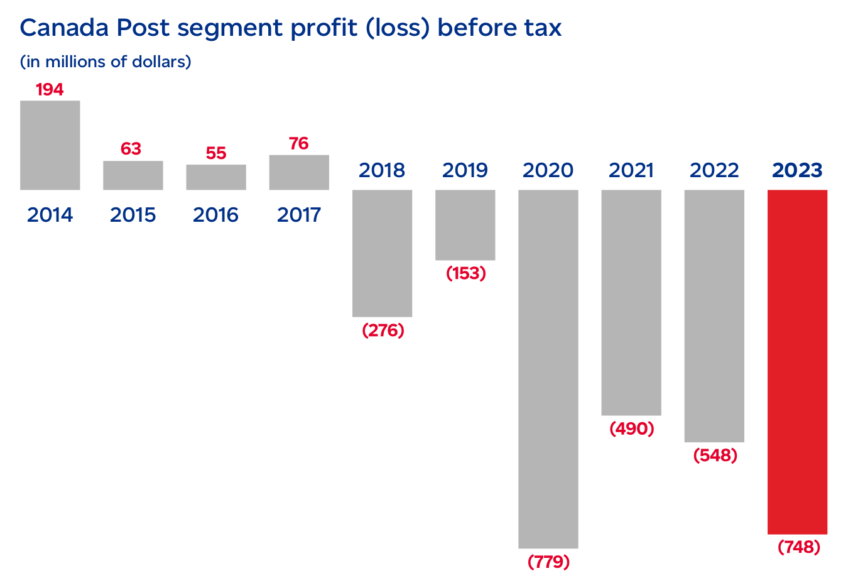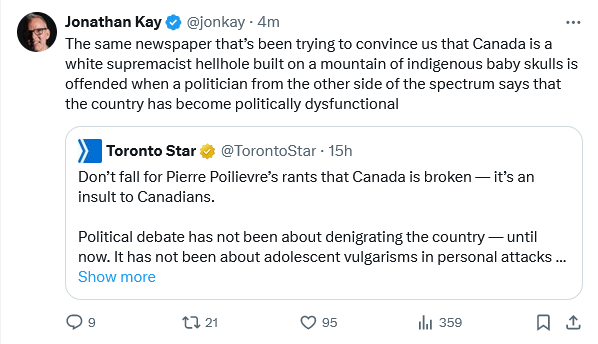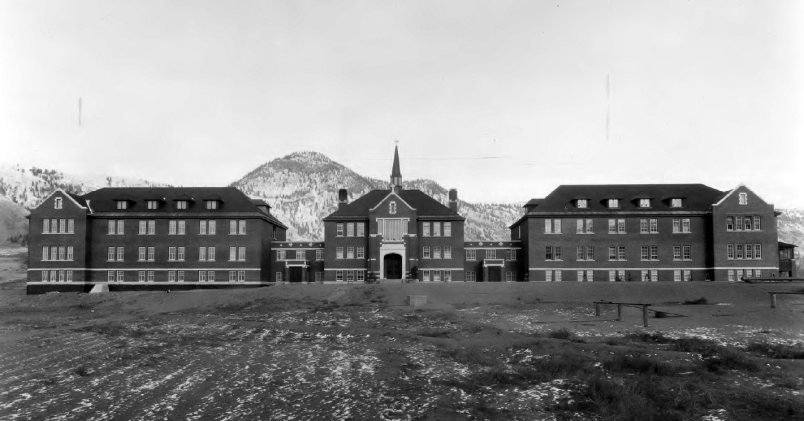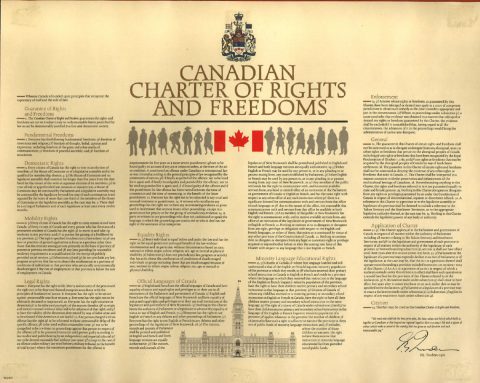pdbass
Published Jan 4, 2024Remember that time Rush worked music from cartoons into one of their greatest recordings?
Digging into “La Villa Strangiato” from 1978’s Hemispheres, breaking down Geddy Lee’s wicked bass solo (and its Jazz connections) and showing you how pianist/composer Raymond Scott will always be linked to this iconic prog rock instrumental.
(more…)
May 19, 2024
Rush Meets LOONEY TUNES???
May 17, 2024
Lies my teacher taught me
A Peel District School Board teacher using the pseudonym “Igor Stravinsky” explains the sort of indoctrination high school students are receiving about First Nations and the development of Canada:
Previously in this series, I have discussed some of the things students are learning, and not learning, about Indigenous people in the Peel District School Board:
- Indigenous people are the true owners of the land; the rest of us are just settlers
- Indigenous people should be able to continue to practice their traditional ways while being provided all the amenities commensurate with living in a modern, first world country
- Indigenous people are victims, other Canadians are oppressors
- The disproportionately poor quality of life which characterizes the lives of many Indigenous people today is the result of past and current injustices by non-Indigenous people, chiefly the Indian Residential Schools
- Life was good for Indigenous people, who were wise and peaceful, before Europeans showed up
- The goal of the Europeans who arrived in Canada was the genocide of Indigenous people
- The settlers failed in their quest for genocide due to the courage and resilience of the Indigenous people
As I have demonstrated, all of the above is simplistic, misleading, or false.
Why teach students a false narrative?
The ahistorical Indigenous genocide narrative started out in academia where Grievance Studies (Indigenous Studies, Black Studies, Queer Studies, Fat Studies, etc.) have a massive presence. These post-modernist inspired programs, collectively referred to as “Critical Theory” have influenced all areas of academia and spread to Canadian institutions generally. Grievance studies programs can only exist so long as there are grievances, which necessitates re-writing history and putting people into oppositional groups of victims and oppressors. Academics had to either get on the bandwagon or keep their mouth shut if they disagreed with this new paradigm. Those who did not, such as Frances Widdowson, were attacked and paid a massive price for speaking freely about the lies on which grievance studies programs are based.
Left-leaning politicians have been keen to get on board with Critical Theory. It wins them support from the academics and well-meaning (but poorly informed) members of the public who want to be “on the right side of history”. Even conservative politicians tend to look the other way, seeing taking on the well-organized, well-funded, academia-based activists as an overall vote loser. After all, they can count on the conservative vote. To whom else can such voters turn? Consequently, school boards and the authors of school curricula are captured by Critical Theory and teachers are expected to tow the line. Anyone who doesn’t is said to be “causing harm” and faces harsh discipline.
Entrenchment of the Indigenous genocide narrative ensures ever increasing payments from Canadian taxpayers in the form of rent and compensation. The lion’s share of these payments go to the Grievance Industry Tzars- Corrupt Indigenous leaders and their non-Indigenous allies, with little trickling down to the average Indigenous person. That is why, in spite of the fact that an ever-increasing part of our federal budget is dedicated to payments to Indigenous groups (to reach 7.7% – $74.6 billion annually by 2026-27), many Indigenous people live in squalor on reserves without basic amenities like clean water, while many others live on the street in urban areas. How can this be happening when taxpayers are handing over more than $40 thousand per year per each Indigenous person?
Is it reasonable for people who want to live in remote areas engaged in low value hunting, gathering, and horticulture activities, declining to integrate into the modern Canadian socio-economic system, to expect 21st century amenities and services paid for by other Canadians? If non-Indigenous people balk at funding this economically unviable mode of existence, does that make us guilty of racism or genocide? That is the impression kids in school are left with after the “education” they receive on the matter.
Canada Post is in deep, deep trouble
I was vaguely aware that Canada Post has been in financial difficulties for a while, but I had no idea things were quite this dire:
You’d better believe that the Canada Post Corporation is in very deep trouble. Here’s how they phrased it in their 2023 annual report:
Canada Post’s financial situation is unsustainable.
“Unsustainable”. Well that doesn’t sound good. Think they’re just putting on a show to carve out a better negotiating position? Well, besides for the fact that they’re not currently negotiating with anyone, the numbers do bear out the concern:
For 2023, the Corporation recorded a loss before tax of $748 million, compared to a loss before tax of $548 million in 2022. From 2018 to 2023, Canada Post lost $3 billion before taxes. Without changes and new operating parameters to address our challenges, we forecast larger and increasingly unsustainable losses in future years.
In other words, it’s madly-off-in-all-directions panic time.
Hey! You know I can hear your condescending sniff: “I’m sure this is just a temporary disruption. They’ll figure out how to fix the leak and get themselves back on the road like always. They’re too big to fail.”
Yeah … not this time. The competition from digital communications (i.e., the internet), FedEx, and UPS isn’t going anywhere. Letter delivery nosedived from nearly 5.5 billion pieces in 2006 to just 2.2 billion in 2022. And vague references to “major strategic changes to transform our information technology model” don’t sound much like magic bullets for reversing the decline.
But Canada Post’s labour and pension costs sure are marching bravely forward. In fact, if it wasn’t for Parliamentary relief in the form of Canada Post Corporation Pension Plan Funding Regulations, the Corporation would have had to pay $354 million into the pension plan in 2023 alone. But that $354 million — plus whatever additional amounts show up in 2024 and besides the $998 million in existing general debt — are still liabilities that’ll eventually need paying.
May 16, 2024
The Canadian Senate is an anti-democratic fossil … that might totally frustrate a future Conservative government
Tristin Hopper considers the constitutional weirdness of Canada’s upper house, an appointed body that has the power to block a popularly elected House of Commons:
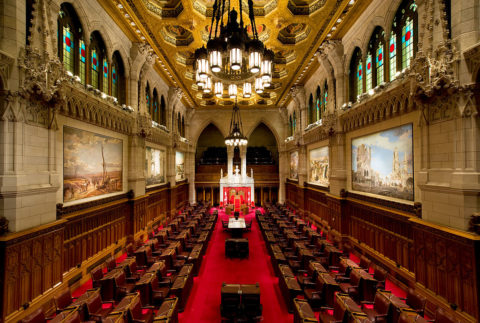
“In the east wing of the Centre Block is the Senate chamber, in which are the thrones for the [King and Queen], or for the federal viceroy and his or her consort, and from which either the sovereign or the governor general gives the Speech from the Throne and grants Royal Assent to bills passed by parliament. The senators themselves sit in the chamber, arranged so that those belonging to the governing party are to the right of the Speaker of the Senate and the opposition to the speaker’s left. The overall colour in the Senate chamber is red, seen in the upholstery, carpeting, and draperies, and reflecting the colour scheme of the House of Lords in the United Kingdom; red was a more royal colour, associated with the Crown and hereditary peers. Capping the room is a gilt ceiling with deep octagonal coffers, each filled with heraldic symbols, including maple leafs, fleur-de-lis, lions rampant, clàrsach, Welsh Dragons, and lions passant. On the east and west walls of the chamber are eight murals depicting scenes from the First World War; painted in between 1916 and 1920”
Photo and description by Saffron Blaze via Wikimedia Commons.
By the anticipated date of the 2025 federal election, only 10 to 15 members of the 105-seat Senate will be either Conservative or Conservative appointees. The rest will be Liberal appointees. As of this writing, 70 senators have been personally appointed by Trudeau, and he’ll likely have the opportunity to appoint another 12 before his term ends.
What this means is that no matter how strong the mandate of any future Conservative government, the Tory caucus will face a Liberal supermajority in the Senate with the power to gut or block any legislation sent their way.
“If a majority of the Senate chose to block or severely delay a Conservative government’s legislative agenda, it would plunge the country into a constitutional crisis the likes of which we have not seen in more than a century,” reads an analysis published Tuesday in The Hub.
Constitutional scholars Howard Anglin and Ray Pennings envisioned a potential nightmare scenario in which the Senate casts themselves as “resisting” a Conservative government. Given that senators are all permanently appointed until their mandatory retirement at age 75, it would take at least 10 years until a Conservative government could rack up enough Senate appointments to overcome the Liberal-appointed majority.
“Canadian politics would grind to the kind of impasse that is only broken by the kind of extraordinary force whose political and social repercussions are unpredictable,” they wrote.
The piece even makes a passing reference to 1849, when mobs burned down Canada’s pre-Confederation parliament.
The prospect of an all-powerful Senate able to block the mandate of an elected government is a legislative situation almost entirely unique to Canada.
New Zealand abolished its Senate and is now governed by a unicameral legislature. Australia and the United States both employ term-limited elected senates. The U.K. House of Lords – on which the Canadian Senate is closely modelled – is severely constrained in how far it can check the actions of the House of Commons.
But in Canada, the Senate essentially retains the power of a second House of Commons; it can do whatever it wants to legislation that has passed the House of Commons, including spike it entirely.
May 15, 2024
Canada’s Minister of National Defence says new submarines are “inevitable”
Bill Blair regrets earlier comments that some read as weakening the government’s already feeble commitment to re-equipping the Royal Canadian Navy’s submarine branch:

HMCS Victoria, one of the four submarines currently in service with the Royal Canadian Navy. She was originally commisioned into the Royal navy as HMS Unseen in 1991 and re-commissioned as HMCS Victoria in 2000.
Image via Wikimedia Commons.
Bill Blair, the federal defence minister, made a rare admission of Liberal fallibility in Washington on Monday when he said he regrets using the word “explore” when talking about renewing Canada’s submarine fleet.
Ottawa’s recent defence policy update said the government will “explore options for renewing and expanding the submarine fleet”, a form of words that was criticized for lacking urgency.
“It’s certainly not my intention to be wishy-washy. What I’ve tried to articulate very, very clearly and strongly in the document is, we know we have to replace our submarine fleet, and we’re going to do that,” Blair said.
Replacing the four Victoria-class subs is necessary, he said. “It is, I might suggest, inevitable.”
That is absolutely the case, if Canada is committed to maintaining its submarine capability. The Victoria-class subs date back to the late 1980s and are due to be taken out of service at the end of the 2030s.
Submarines are seen as a crucial defence against incursion by hostile powers, as the polar ice melts and opens up northern waterways. The Northwest Passage is forecast to be the most efficient shipping route between Asia and Europe by 2050.
But Blair admits “there is a lot of work to do”, not least convincing his cabinet colleagues of the “business case for the capability”.
“One of the greatest challenges of being a defence minister is to secure funding and the second one is actually spending it”, he said on Monday.
He gave a sense of the struggles around the cabinet table last month in a speech in Ottawa, where he admitted: “I had to sort of keep on pushing my issue forward about the importance and the need to invest in defence”. He made it sound as if he was a lone voice in the wilderness.
[…]
Retired captain Norman Jolin recently wrote an analysis for the Naval Association of Canada that noted if Canada wants to maintain submarine capability, it needs to place a contract with a proven builder by 2027 at the latest. He said the lack of domestic submarine-building capacity means there is neither the time nor resources to even think about a made-in-Canada solution.
The typical procurement process takes 18 years to get from cabinet approval to delivery, which would mean if an order was placed tomorrow, we wouldn’t get new subs until 2042.
Based on that timeline, “it is clear that the decision to replace the submarines is considerably overdue,” Jolin wrote.
There’s little chance that this will move closer to completion during the remaining life of the current government, with an election due before the end of 2025, and Blair is already on the record emphasizing how little the Liberals would relish spending any money on military equipment even in good economic times. Oddly, the fact that there are no domestic shipyards currently capable of building submarines may be a positive — building the RCN’s ships in Canadian yards always means that each ship costs much more than if the hull is built in a foreign shipyard. Canada doesn’t have the facilities and trained workforce to build naval vessels, so every time a new class of ships is needed, the cost of building/refurbishing the shipyards and hiring and training-from-scratch a new workforce balloons the total cost of the program.
May 13, 2024
“Our NATO allies are despairing. Our American friends are frustrated … all the officers are extraordinarily polite in public. But in private, the conversations are quite brutal.”
Former Liberal MP and retired Lt.-General Andrew Leslie has few illusions about the current Liberal government’s approach to military issues:
Lt.-Gen. (ret’d) Andrew Leslie is keen to talk about the embarrassing state of Canadian military preparedness.
“The current prime minister of Canada is not serious about defence. Full stop. A large number of his cabinet members are not serious about defence. Full stop,” the former Liberal MP tells me.
“Our NATO allies are despairing. Our American friends are frustrated. But because NATO and Norad (North American Aerospace Defense Command) are both essentially voluntary organizations, in which other people cannot give Canada orders,” the retired general explains, “all the officers are extraordinarily polite in public. But in private, the conversations are quite brutal.”
I have asked Andrew to explain our federal government’s foot-dragging on military spending — despite significant changes in risk — and what we should expect from our allies. This 35-year veteran of the Canadian Armed Forces (CAF), former chief of staff of the Canadian Army and one-time MP for Orleans is well-placed to decipher what’s really going on and in our frank conversation, he doesn’t pull any punches. I connect with Andrew at his home in Ottawa; behind him, the walls of his spacious office are sheathed in medals and awards, testimony to decades of decorated service in places like Afghanistan and Yugoslavia.
We get to the heart of the matter. Canada’s allies are pressuring Prime Minister Justin Trudeau’s government to get serious about military spending. And with a relentless war in Ukraine, a thawing and more vulnerable Arctic, unrest in the Middle East, and a general shakeup of the world order, Canadians are waking up to the risks of not being ready to defend ourselves.
Recently, U.S. Air Force Gen. Gregory Guillot (who took over leadership of Norad in February) has put his Canadian counterparts on notice that he aims to have U.S. troops training, not just in Alaska, but in the Canadian Arctic. A good idea, or the thin edge of a wedge?
It’s totally sensible, Andrew replies, because Canada has “no permanently stationed combat capability in the Arctic.” After a pause to let that sink in, he repeats that fact and elaborates. “Just in terms of numbers, there’s about 22,000 professional men and women in the U.S. Armed Forces based in the Arctic, mainly in Alaska. There’s about 30,000 to 35,000 Russian armed forces based in the Arctic. Canada has about 300 people.”
May 12, 2024
Whitneyville Rolling Block for the Montreal Riot Squad
Forgotten Weapons
Published Feb 2, 2024In 1875 the Montreal City Police decided that they wanted to equip a riot squad in case of public disturbance. They initially requested funds for 50 revolvers, but this changed to 60 carbines instead, and these were purchased via broker in 1876 from the Whitneyville Armory. Whitneyville was a factory that made a variety of independently patented designs, and their rolling block design was actually protected by a different patent (the Whitney-Laidley) than Remington’s, despite the very similar appearances of the two guns.
The Montreal Rolling Blocks were carbines, fitted with long bayonets and chambered for a .43 caliber black powder cartridge. They were engraved “Montreal Police” on the barrels, and were actually never fired in anger, nor even deployed. They remained in government possession until the 1960s, when they were finally sold off. This example is here for me to film courtesy of Mike Carrick of Arms Heritage Magazine.
(more…)
May 11, 2024
Rex Murphy, RIP
Canadian political commentator Rex Murphy has died at 77:
Tributes and remembrances from across the political spectrum have poured in for Rex Murphy, who died aged 77.
Mark Critch, a fellow Newfoundlander who parodied Murphy on the CBC program This Hour Has 22 Minutes, recalled that Murphy had worked with his father at VOCM radio in St. John’s, N.L. “You might not always agree with what he had to say but oh, could he say it”, Critch wrote on X, formerly Twitter. “I hope he makes it home to Gooseberry Cove.”
That theme — of not always agreeing with Murphy, but admiring his style — has been frequent in remembrances of his life.
Bob Rae, a long-time Liberal member of Parliament, former premier of Ontario and now Canada’s ambassador to the United Nations, wrote of meeting Murphy on television in 1978: “He stole the show”.
“We disagreed about many things, but I never lost my affection and admiration for him,” Rae wrote on X.
In a video posted Thursday evening, which had been recorded for an award Murphy received prior to his death, Conservative Leader Pierre Poilievre praised Murphy’s “verbal ninja moves”.
“You are a national treasure. You are a voice of reason. You are a champion of all things that are great in our country,” Poilievre said.
Canada has lost an icon, a pioneer of independent, eloquent, and fearless thought, and always a captivating orator who never lost his touch.I was honoured to toast to Rex a few months ago on receiving the Game Changers Award for one of this country’s true game changers.
Rex,… pic.twitter.com/Nz8fWBPv7F
— Pierre Poilievre (@PierrePoilievre) May 10, 2024
On Friday, the House of Commons held a moment of silence in honour of Murphy.
“Few gifts from the rock rival that of the now-departed Rex Murphy,” Conservative MP John Williamson said in the House. “Rex stood on guard for all of us with great wit and wisdom throughout his many newspaper columns and on-air commentaries. Rex was brave but without pretence. He despised the smug.”
Murphy’s writing, which appeared for more than a decade in National Post, was always fierce, often controversial, and liberally peppered with the sort of language that has the feel of an age gone by.
May 9, 2024
The Liri Valley: Canada’s Breakthrough to Rome
WW2TV
Published 8 May 2024The Liri Valley: Canada’s Breakthrough to Rome
With Mark Zuehlke
Part of our “Italy 1944 – Monte Cassino and Beyond” series
• Monte Cassino and BeyondFor the Allied armies fighting their way up the Italian boot in early 1944. Rome was the prize that could only be won through one of the greatest offensives of the war. The Liri Valley was a long, flat corridor through miles of rugged mountains. At one end stood the formidable Monte Cassino, at the other, Rome. In May 1944, I Canadian Corps drops up this valley toward the Italian capital, facing the infamous Hitler Line — a bastion of concrete bunkers fronted by wide swaths of tangled barbed wire, minefields, and “Tobruk” weapon pits. The ensuing battle resulted in Canada’s single bloodiest day of the Italian campaign. But the sacrifice of young Canadians during the twenty-four days of relentless combat it took to clear the valley paved the way for the Allies to take Rome.
Mark Zuehlke is an award-winning author generally considered to be Canada’s foremost popular military historian. His Canadian Battle Series is the most exhaustive recounting of the battles and campaigns fought by any nation during World War II to have been written by a single author.
(more…)
May 6, 2024
The Canadian Army defiles updates its online branding
Shady Maples isn’t too impressed with the new corporate image “icon” the Canadian Army extruded onto their TwitX account last week:

The Canadian Army’s dysenteric moose shitting itself to death, er, I mean “The Canadian Army’s latest supplementary icon for online use”
The Canadian Army needs to get its shit together on Twitter, not because Twitter is important, but because people believe that Twitter is important. If you follow official accounts, then you’re probably tracking the Army’s latest update to its corporate branding.
Within hours the Army was
furiously backpedalingclarifying that our new digitalized Rorschach test wasn’t a replacement logo, but an “icon” that “will be used in the bottom left corner of certain communications products and in animations for videos”. This was a bigger news event than the announcement itself.When I first saw this thing, I thought it was a maple leaf blowing past north Africa. Could this be Straussian commentary on our National Defence Strategy? Perhaps, but now thanks to Twitter all I see when I look at it is a dysenteric moose shitting itself to death (and now you do too).
The hook in all this isn’t the new branding, which is just a drop in CAF’s vast ocean of PowerPoint phluff, the visual equivalent of white noise. It’s also not in the backlash either, because that’s just another Tuesday on Twitter. You see, unlike the Iranian nuclear program or whatever’s happening between Drake and Kendrick Lamar, the CAF is not a topic of serious international concern.
Come for the mocking of the icon, stay for the contrasting social media appearances of Canadian and Israeli Lieutenants General.
May 5, 2024
Trudeau’s shameful role in promoting “the blood libel against Canada”
Conrad Black believes that Justin Trudeau owes Canadians an apology for his role in pushing the most extreme version of the Residential Schools propaganda:
A very well-informed friend of many years, a contemporary of mine, wrote me the other day that “The blood libel against Canada of this monstrous fiction of thousands of secretly buried Indigenous victims of residential schools may be the single worst injustice this country has suffered in our lifetimes. It is now a conspiracy of silence involving both federal and provincial governments, the RCMP (shameless and useless as ever), and the media, and ‘let’s be frank’, (quoting a Soviet diplomat many years ago whom we both always found rather entertaining in the utter nonsense he used to recite at international meetings), a large section of the public, which knows this to be a falsehood but chooses to side with the silent forces”.
Almost all readers will be aware of the tidal wave of self-mutilating hysteria that inundated this country when, on the basis of apparent anomalies detected by underground radar close to a former Indian Residential School site at Kamloops, British Columbia, a couple of years ago. Immediately, the theory took hold that thousands of native children in those schools had died because of negligence or outright homicide, were buried secretly in unmarked graves, their deaths never recorded and no account given to their families. There is no evidence to support this, yet the prime minister led the nation in an almost medieval circular mass pilgrimage of self-flagellation. In order to impress upon ourselves and the entire world the profundity of our self-humiliation, all official Canadian flags everywhere were lowered to half-mast and maintained in that condition for an unheard-of period of six months.
Parliament voted to spend $27 million to conduct the excavations necessary to verify or otherwise the existence and extent of these graves. This work could have been accomplished by a small group for a few thousand dollars, but the suggestion of actually establishing what happened set up the customary cacophony of complaints about the sacred untouchability of burial grounds, even though it was not clear that there was burial ground at the Kamloops site, and if it was it was rank speculation about who might be buried there if it was. It is not conceivable to me that the country could dress itself out in sackcloth and ashes and flay the flesh off its own back before the bemused or astonished eyes of the entire world and then produce no evidence whatever of the unspeakable outrages that allegedly occurred and gave rise to this conduct, and then simply lapse into Sphinx-like incommunicability: a pristine silence of perfect ambiguity followed a near-terminal St. Vitus dance of window-rattling ululations of national guilt, shame, and self-hate.
Kamloops Indian Residential School, 1930.
Photo from Archives Deschâtelets-NDC, Richelieu via Wikimedia Commons.Various parts of this macabre fable have been precisely and publicly put to rest: children in residential schools were not buried secretly and records were not destroyed; residential school students were accounted for and if they died while at the schools the reason was typically provided and it was almost invariably as a result of illnesses that were not as well treated in those times, and particularly tuberculosis. Beyond that, there has been silence: the febrile allegations of hideous wrongdoing vituperatively hurled at Canadian history and society – at the ancestors of English and French Canadians, at the main Christian churches, at the principal founder of our country whose distinguished name (John A. Macdonald) has been taken down from public buildings, statues of him overturned or removed, and effigies of him burned at festivities of confected righteous anger from coast to coast; all just mysteriously stopped. It is a sonic version of the celebrated poem by Shelley about the fallen monument of a once great King: “Round the decay of that colossal wreck, boundless and bare, the loan and level sands stretch far away.”
May 4, 2024
Bill Blair – “I couldn’t make a defence policy argument to meet that spreadsheet target of two per cent”
I don’t find it at all surprising that Canada’s current Minister of National Defence hasn’t been able to persuade Justin Trudeau and the rest of cabinet that we should live up to our treaty commitments to our NATO allies. I do find it surprising that he’s allowed to say anything on the topic that implies criticism of Justin’s tame ministers:
This week, Defence Minister Bill Blair made a rare admission for a federal cabinet minister: He said he keeps trying to get the rest of cabinet to fund the Canadian military to NATO standards, but nobody’s biting.
“Don’t get me wrong. It’s important, but it was really hard (to) convince people that that was a worthy goal,” Blair said in a Wednesday address to the Canadian Global Affairs Institute, a foreign affairs think tank.
Blair was speaking specifically about boosting Canadian defence spending to the NATO standard of two per cent of GDP, which he referred to as a “magical threshold”.
“Nobody knows what that means, they didn’t know how much that is and they didn’t know what we were going to spend money on, so I couldn’t make a defence policy argument to meet that spreadsheet target of two per cent,” he said.
Only a few years ago, it was pretty typical for NATO members to fall well short of the two-per-cent threshold. In 2018, for instance, Canada spending 1.23 per cent of GDP on defence put it roughly on par with Germany, The Netherlands and Portugal, among others.
But Russia’s all-out invasion of Ukraine in 2022 sparked a massive defence-spending boost among the alliance. Germany, most notably, greenlit a massive rearmament plan with the specific goal of hitting the NATO threshold.
According to a 2023 report by the NATO Secretary General, Canada is the only member of the alliance to fail on both spending metrics tracked by the organization: The two-per-cent threshold, and the requirement that at least one-fifth of the defence budget be spent on equipment.
This is a perennial sticking point in Canada’s NATO membership. In February, both NATO Sec.-Gen. Jens Stoltenberg and U.S. ambassador to Canada David Cohen publicly chastised Canada for failing to deliver on its military commitments. Years earlier, U.S. president Donald Trump said Canada was “slightly delinquent” when it came to its NATO funding.
May 2, 2024
Gad Saad’s latest “affront to human dignity” kerfuffle
Gad Saad managed to do more than just ruffle the feathers of the Québécois last year by calling the Quebec accent “an affront to human dignity”:
In my 30-year career as a professor and public intellectual, I have never shied away from tackling sacred cows. As a free speech absolutist, I firmly believe that short of the usual caveats (e.g., direct incitement to violence, defamation), free speech is a deontological principle that is inviolable. As a Jewish person, I support arguably the most offensive speech possible, namely the denial of the Holocaust. Such is the price that we must pay to live in a truly free society.
As I explain in my 2020 book, The Parasitic Mind: How Infectious Ideas Are Killing Common Sense, the operative zeitgeist in the West is that one’s speech should be tempered in order to minimize the prospect of hurt feelings. This is a terrible reflex in that it forces people to engage in arguably the most pervasive form of censorship, self-censorship. The reality though is that truth must be anti-fragile to mockery, derision, satire, criticism and scrutiny. If it cannot withstand such stressors, it is undoubtedly false. Or as the philosopher Peter Sloterdijk remarked in Critique of Cynical Reason (p. 288): “How much truth is contained in something can be best determined by making it thoroughly laughable and then watching to see how much joking around it can take. For truth is a matter that can stand mockery, that is freshened by any ironic gesture directed at it. Whatever cannot stand satire is false.”
This brings me to a bewildering episode that I faced last summer. The cancel mob came for me albeit in a truly unexpected manner. On July 25, I appeared on Joe Rogan’s podcast for the ninth time to promote the release on that day of my latest book, titled The Saad Truth About Happiness: 8 Secrets for Leading the Good Life (paperback edition to be released on May 14, 2024). My conversations with Joe are always fun, informative and far-ranging. At one point during our chat, we were jocularly discussing various accents that I found to be auditorily unappealing. I remarked that my family and I had just returned from Portugal, and accordingly I had found the Portuguese accent to be less than attractive. I then qualified Hebrew as “violently ugly”. But it was the third accent that unleashed the tsunami of rage, insults, threats and calls to have me fired from my 30-year professorship. I jokingly said that the French-Canadian accent was an “affront to human dignity”. The sentence in question has become a trademark hyperbolic humorous phrase that I use when expressing an over-the-top esthetic opinion. It is a running gag that has appeared on numerous occasions on my X (formerly Twitter) feed. I have referred to The Beatles, musicals, Lionel Messi haters, fans of Cristiano Ronaldo, and the song “Ironic” by Alanis Morissette as an affront to human dignity/decency. If my wife burns our dinner, I might joke with her that the dish is an affront to human dignity.
In the past, I have triggered the ire of many ideological groups including Islamists, trans activists and vegans. But nothing compared to the unbridled hate that I received from some of my fellow Quebecers, which was largely set off by an article written by Marc Cassivi in La Presse regarding my apparent “linguistic genocide”. My stellar 30-year record as an academic and international bestselling author had never managed to capture the attention of French-Canadian society but once I dared to joke about the local accent, I had committed a linguistic capital crime. And it was time for me to pay!
May 1, 2024
The Supreme Court of Canada has created “Charter-free zones” in Canada
A recent Supreme Court of Canada decision to allow the Charter of Rights and Freedoms to be overridden in cases where First Nations’ laws conflict with the rights guaranteed to all Canadians by the Charter:
Governments of the over 600 First Nations bands and self-governing Indigenous communities across Canada have been given the green light by the Supreme Court to, in their laws, legally abrogate and override the civil liberties of their band members and citizens.
In its Dickson v. Vuntut Gwitchin First Nation decision the Court ruled that so long as an Indigenous government law “protects Indigenous difference — understood by the collective as interests connected to Aboriginal cultural difference, Aboriginal prior occupancy, Aboriginal prior sovereignty or Aboriginal participation in the treaty process” — then, despite the fact that the law infringes the Charter rights of its citizens, those Charter rights cannot have any application or be given any effect to.
Four of the seven Judges who ruled on the case ruled that the Canadian Charter of Rights and Freedoms prima facie applies to Indigenous government laws, but notwithstanding that, if the law is to “protect Indigenous difference”, and the exercise of a Charter right would have the effect of diminishing that “Indigenous difference”, then section 25 of the Constitution Act “shields” the law from Charter application.
A fifth Judge ruled that section 25 meant that the Charter didn’t apply at all to Indigenous government laws, not even prima facie.
Two of the seven judges dissented, one of whom very significantly was Madame Justice O’Bonsawin, the Indigenous person appointed to the Supreme Court supposedly to import an “Indigenous perspective” into its judgments. These two dissenting Justices wrote correctly that the majority opinion creates “Charter-free zones” in Canada. They further wrote:
Minorities with Indigenous communities (will) not be protected from the actions of their own governments. All Canadians, including Indigenous people, need constitutional tools to hold their governments accountable for breaches of their entrenched rights and freedoms. It is against the purposes of the Charter and s. 25, as well as being profoundly inequitable, to deny members of self-governing Indigenous nations similar, rights, remedies and recourse.
There are more than 1.8 million Indigenous Canadians, two-thirds of whom live “off-reserve” in Canada’s towns and cities. The Supreme Court of Canada has deprived all these Canadians of the protections afforded by the Charter of Rights and Freedoms on their home reserves and territories.
The Court employed cloud castle reasoning to bring about this illiberal and un-Canadian result, heavy on empty verbal assertions and abstractions with little relation to practical life.
Cloud castles are pleasant and charming to conjure up, even more so because they have no foundations.
The factual foundations of the Court’s decision, such as they, like those of cloud castles, are mainly imaginary. To the extent that may exist in reality, they are wrong.
In an earlier article the writer wrote on this case Cindy Dickson discussed the discriminatory, black sheep treatment she faced when trying to run for office in Vuntut Gwitchin.
The article pointed out other negative, First Nations realities ignored by the majority of the Supreme Court of Canada in its judgement: the “banana republic” nature of small Indigenous governments, and alpha-type band chiefs and councils — “colonizers of their own people” — overseeing a conflicted, family-based system of self-dealing and crony capitalism.
Indigenous Justice O’Bonsawin, as part of her “Indigenous perspective”, expressly acknowledged these entrenched negatives and listed other illiberal aspects of the “Indigenous difference” that the Charter exists to prevent or remedy: the unequal role given men in debating constitutional reforms, band membership rules that excluded some women and their children, election codes that prevent individuals from running for office on the basis of their gender, marital status or sexual orientation, and warrantless searches of homes.



